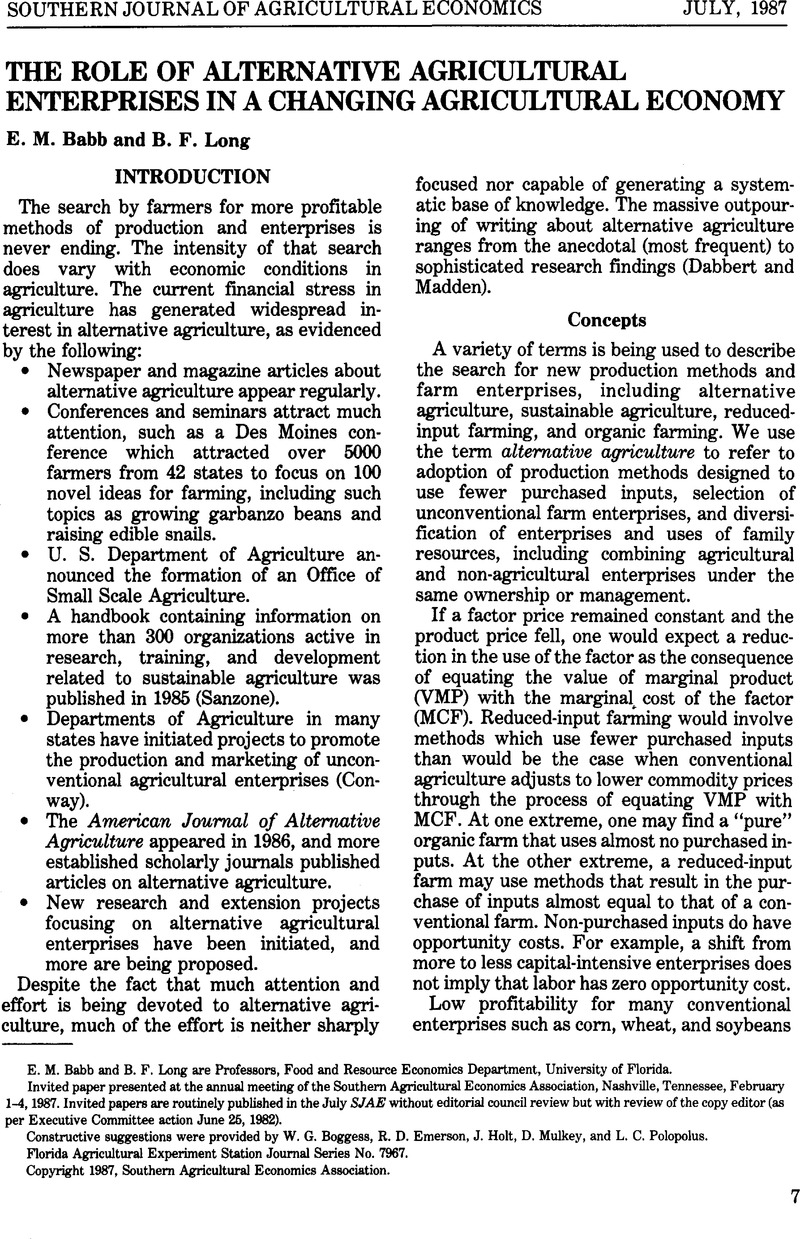Crossref Citations
This article has been cited by the following publications. This list is generated based on data provided by Crossref.
Batie, Sandra S.
1988.
Agriculture as the Problem: New Agendas and New Opportunities.
Journal of Agricultural and Applied Economics,
Vol. 20,
Issue. 1,
p.
1.
Libby, Lawrence W.
1991.
Professional Diversity in Agricultural Economics: Salvation or Suicide?.
Journal of Agricultural and Applied Economics,
Vol. 23,
Issue. 1,
p.
1.
Prevatt, J. W.
Bauer, L. L.
Kaiser, E. H.
and
Rathwell, P. J.
1992.
Measuring The Effect Of Capital Structure And Seasonality On Expected Returns And Risk: The Fresh Market Vegetable Case.
Journal of Agricultural and Applied Economics,
Vol. 24,
Issue. 1,
p.
171.
Babb, Emerson M.
and
Long, Burl F.
2019.
The Rural South in Crisis.
p.
344.



